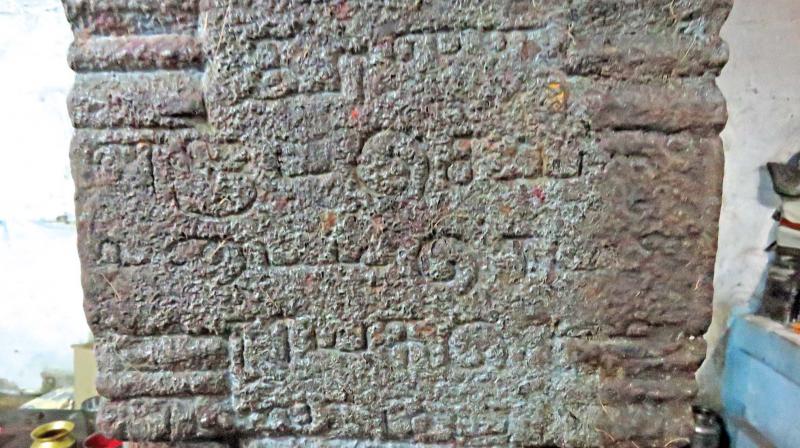Inscriptions throw light on Yadavas' contributions

Tiruchy: Some research scholars attached to the city-based Rajamanikkanar Centre for Historical research have discovered three 12th century Chola inscriptions from Sri Amarasundara Nayanar Temple at Singalanthapuram on the Tiruchi-Thuraiyur highway near here, according to R. Kalaikkovan, director, Dr M. Rajamanikkanar Centre for Historical Research, Tiruchy.
These inscriptions were stumbled upon by R. Akila, assistant professor of History, Arignar Anna Government Arts College, Musiri, and M. Nalini, head of History department, Seethalakshmi Ramaswami College, while assisting an M.Phil research student, M. Seetha.
Dr Kalikovan said the inscriptions were found engraved on the middle portion of the ornamental pillars that support the larger 'mandapas' of the shrines of the presiding deity and his consort Akilandeswari at the temple. "The original design of the pillars has been apparently altered during renovation resulting in damage to the inscriptions. Among the five inscribed pillars, four are at the Amarasundara Nayanar shrine and one is at the Amman shrine," he added.
The village was named after one of the titles of the great Chola king Rajaraja-I, 'Singalathakan', a title he won after the conquest of Sri Lanka. It was a well known mercantile settlement during the Chola regime. The earliest inscription copied from this place belongs to the fifth regnal year of Rajendra-I. He also informed that the pillar inscriptions indicate that a 'hundred pillared Mandapa' was constructed in the premises of the Singalanthapuram Siva temple by the residents of different villages that were included under 'Valluvappadi nadu' (present Perambalur district).
These individuals, who belonged to the Yadava community, had named the 'mandapa' as 'Valluvappadi Nattan Nurrukkal Mandapam alias Amara Sundara Nayanar Nurrukkal Mandapam', the historian noted.
The paleography of the inscriptions points to 12th century CE, as the period in which the hundred pillared 'mandapa' was constructed. "The structure with ornamental pillars was probably damaged due to the ravages of time and the later renovators utilised the available ones after reshaping them to suit their needs in the new constructions," he added. The inscriptions engraved on them throw light on 25 individuals of different villages of Valluvappadi Nadu as donors.

